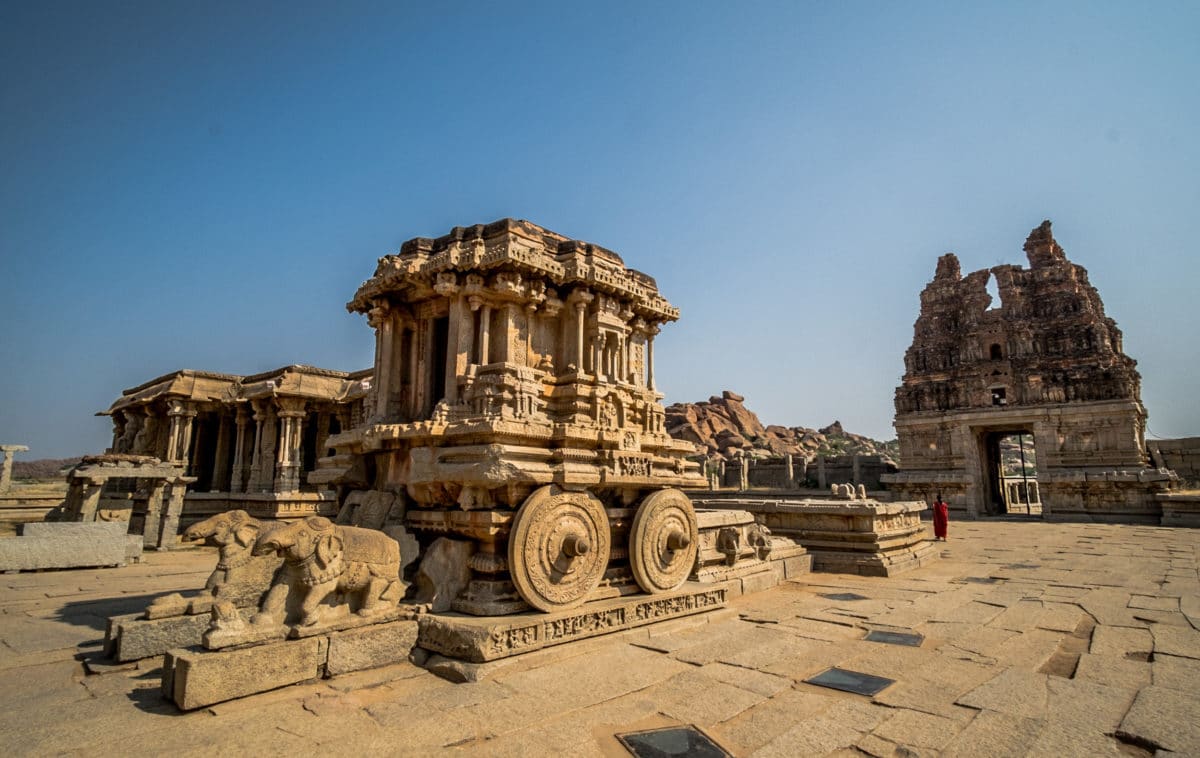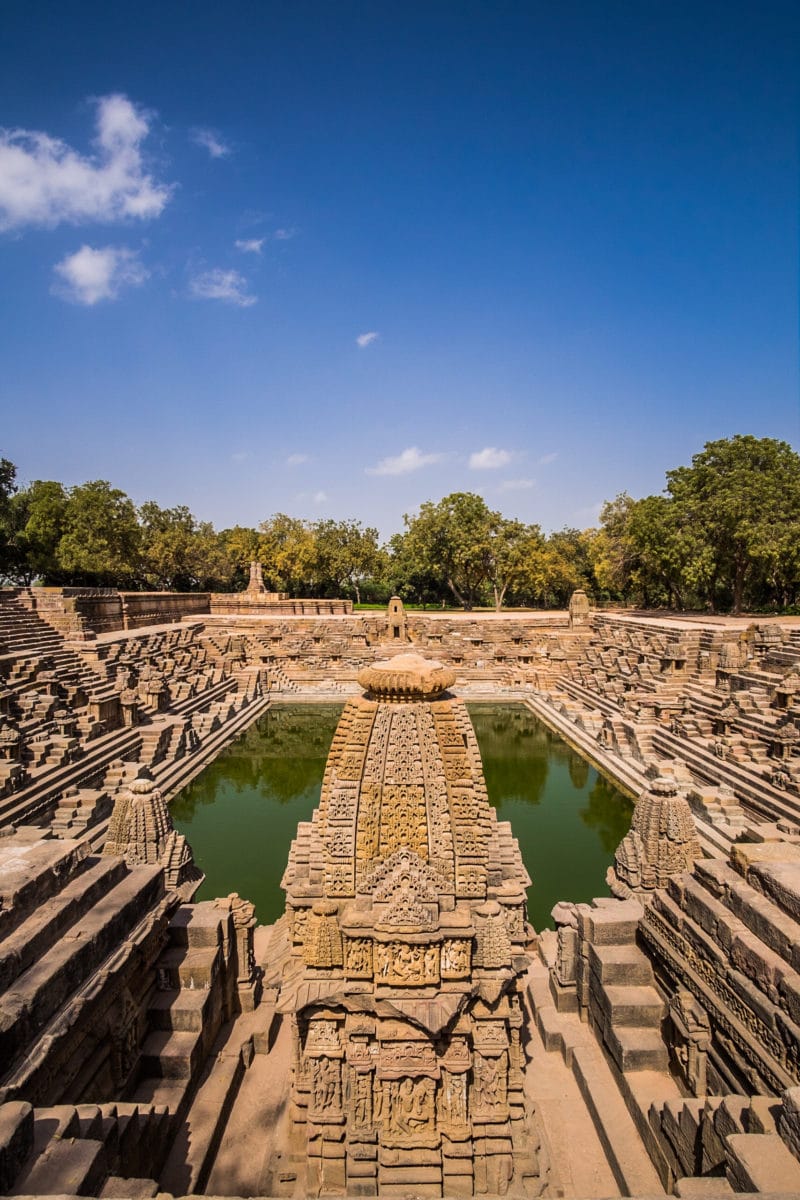Worship of the sun predates known religions and known religious scriptures and texts. It is prevalent all over the world from ancient Mayans to the Egyptians to Indians. It is, after all, paying homage to a very important part of what sustains life on earth. In India, as in other parts of the world, over the ages, we have built grand temples to what is worshipped and revered. Many temples, as well as other monuments and structures, have also been built to showcase the power of the rulers of the time.
Any talk of the sun temple in India conjures up the image of Konark in Orissa. A UNESCO World Heritage site, it is undoubtedly an amazing temple. Built in 1250 AD by King Narasimhadeva I of the Eastern Ganga Dynasty, the temple (pictured above) is shaped like a giant chariot, with 12 pairs of elaborately carved wheels, drawn by 7 mighty horses. Despite the fact that large parts of the temple have been destroyed over the centuries, the remains are still imposing and if you take a step back, you can imagine what it would have looked like in all its glory. The wheels of the chariot have been designed as sun dials, and if you place a pen in the middle of the wheel the shadow falls accurately on what the time of day it is. This is true, we tested it ourselves! Fun! Though the main temple is permanently closed due to structural damages, the outside walls are fascinating with erotic sculptures, scenes from life and as always, images from the religious texts. The massive, perfectly proportioned monument is indeed fantastic, and a great tribute by the King to the sun. It has inspired many over the ages, including the 15th Century Vitthala Temple in Hampi, which is also modelled like a chariot. However, and many might be shocked at us and look at us funny, but as far as sun temples go, we found the lesser known one in Modhera, Gujarat to be much more fascinating.

Almost two hundreds years older than the one in Konark, the Sun Temple in Modhera (pictured below) was built in 1026 AD by King Bhimdev of the Solanki dynasty. It was built to honour the sun, whom the Solanki’s believed they were descendants off; though perhaps it was also built to regain the pride lost to Mahmud of Ghazni’s plundering. The temple is aligned perfectly with the rising sun during the equinox, as well as the massive axially symmetrical step well at the base of the temple. Similar to the one in the Konark, the temple here is also full of erotic sculptures and carvings, along with more pious imagery of the gods and their morals. Apparently, the erotic carvings here were to test the Jain monks, who had taken vows of celibacy. Pretty tough test, given the nature of those carvings!!
Sun temples are fascinating in themselves. Most of them are built in alignment with the light of the sun, such that on specific days (usually the equinox) the rays from the sun create a straight line directly down the centre of the structure. This was true of the temples built by the ancient Pharaohs in Egypt as well as the Kings in the subcontinent, apart from elsewhere in the world. Added to this great feat of science thousands of years ago, is also the beauty and art that surround the temples. Keeping religion aside, sun temples are great places to visit to experience a wonderful coming together of science and art, especially at sunrise.

Some Useful Information
The Temple at Konark is about an hours drive (35km) from Puri and can be done as a half day trip. It is easy to get various modes of transport to Konark from Puri, including autos, buses and taxis. It is a must see on a visit to Orissa.
The Temple at Modhera is about two hours (100km) drive from Ahmedabad and can also be done as a day trip along with the beautiful stepwells outside the city or enroute to Patan. The road is good and we suggest driving if you have that option. Highly recommend visiting the sun temple if you find yourself in Ahmedabad, Gujarat.